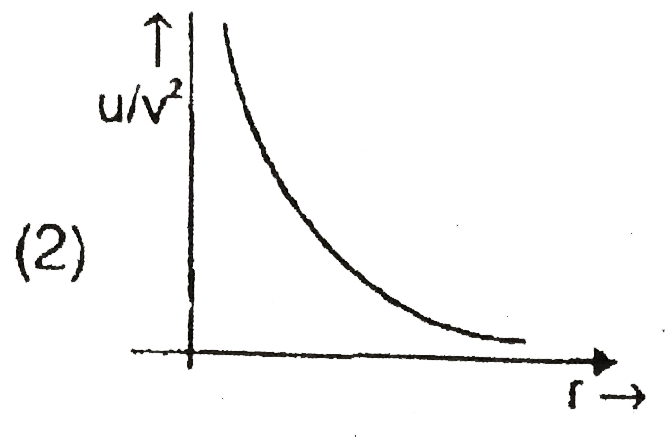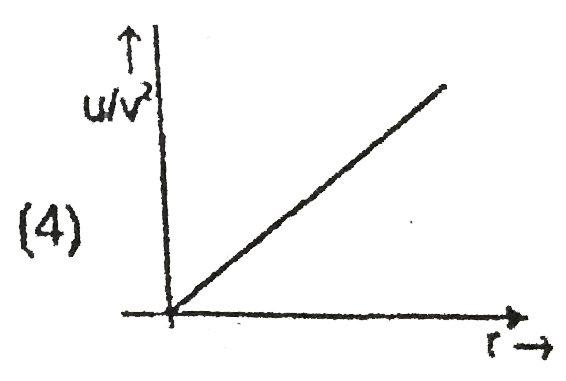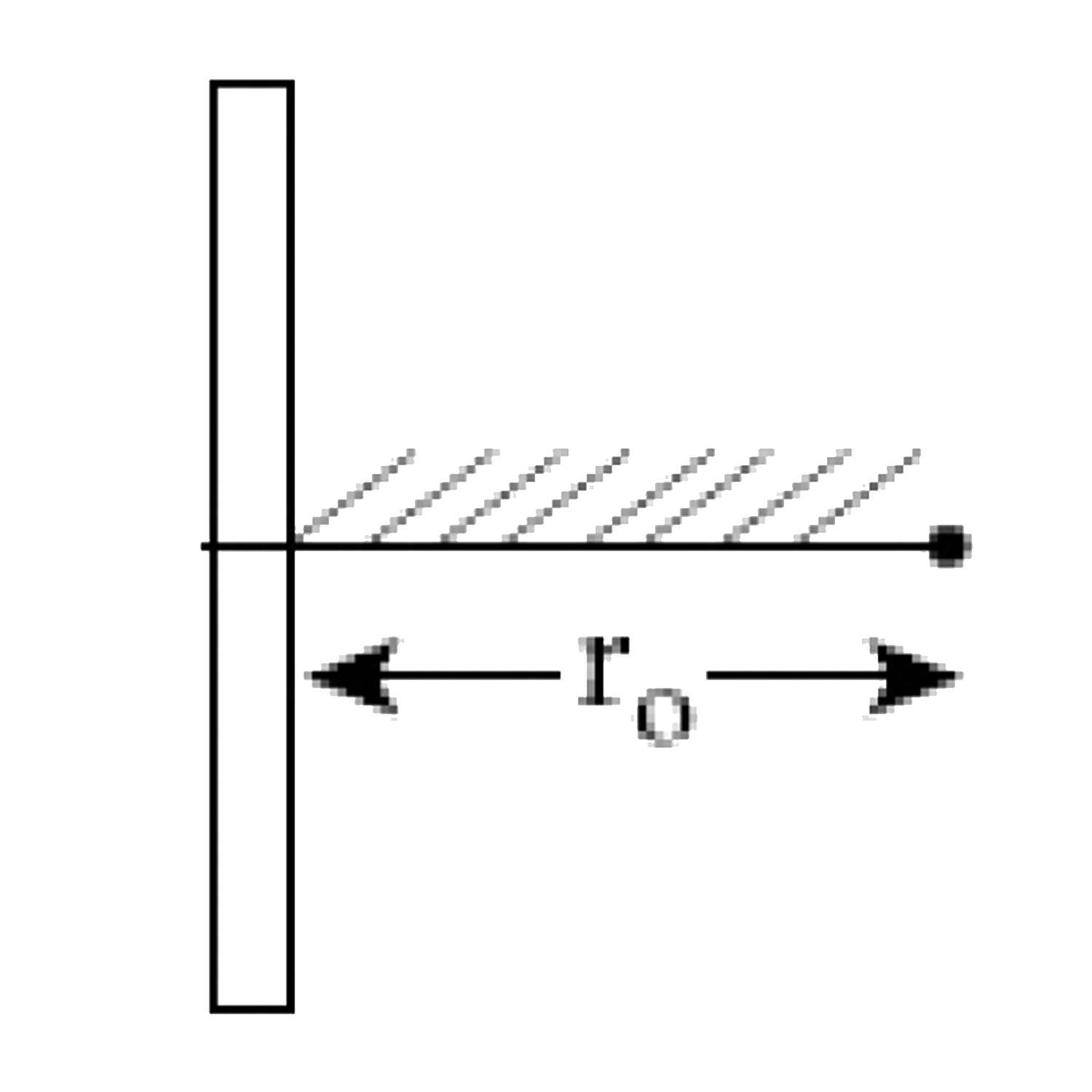At distance r from a point charge the ratio UV2 where U is energy density and V is potential) is best reprsented by




The correct Answer is:B
U=12ε0E2=12ε0K2Q2r4⇒V=KQr⇒UV2=12ε0K2(Q2)K2Q2r2=12ε0r2
Because Uv2∝1r2⇒ so the correct option is B.
Topper's Solved these Questions
Similar Questions
At distance 'r' from a point charge, the ratio UV2 (where 'U' is energy density and 'V' is potential) is best respresented by :
View SolutionAt a certain distance from a point charge, the field intensity is 500Vm and the potential is −3000V. The distance to the charge and the magnitude of the charge respectively are
View Solution
Knowledge Check
- Question 1 - Select One
In a regular polygon of n sides, each corner is at a distance r from the centre. Identical charges are placed at (n−1) corners. At the centre, the intensity is E and the potential is V. The ratio V/E has magnitude
ArnBr(n−1)C(n−1)/rDr(n−1)/n
At a certain distance from a point charge, the field intensity is 500V/m and the potential is −3000V. The distance to the charge and the magnitude of the charge respectively are
View SolutionAt a certain distance from a point charge, the field intensity is 500V/m and the potentil is −3000V. The distance to the charge and the magnitude of the charge respectively are
View SolutionThe energy density uV of an ideal gas is related to its pressure P as
View SolutionPlot a graph comparing the variation of potential ‘V’ and electric field ‘E’ due to a point charge ‘Q’ as a function of distance r from point charge
(ii) Find the ratio of the potential differences that must be applied across the parallel and the series combination of two identical capacitors so that the energy stored, in the two cases, becomes the same.View SolutionA point moves in a straight line under the retardation av2, where 'a' is a positive constant and v is speed. If the initial speed is u, the distance covered in 't' seconds is :
View SolutionIn a regular polygon of n sides, each corner is at a distance r from the centre. Identical charges are placed at (n−1) corners. At the centre, the intensity is E and the potential is V. The ratio V/E has magnitude
View SolutionA positive charge is released from rest at a distance r0 from a positive line charge with uniform density . The speed (v) of the point charge , as a function of instantaneous distance r from line charge, is proportional to:
 View Solution
View Solution

